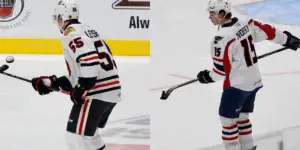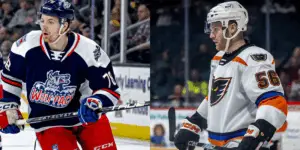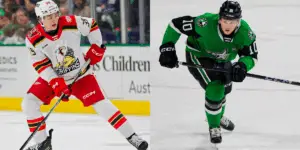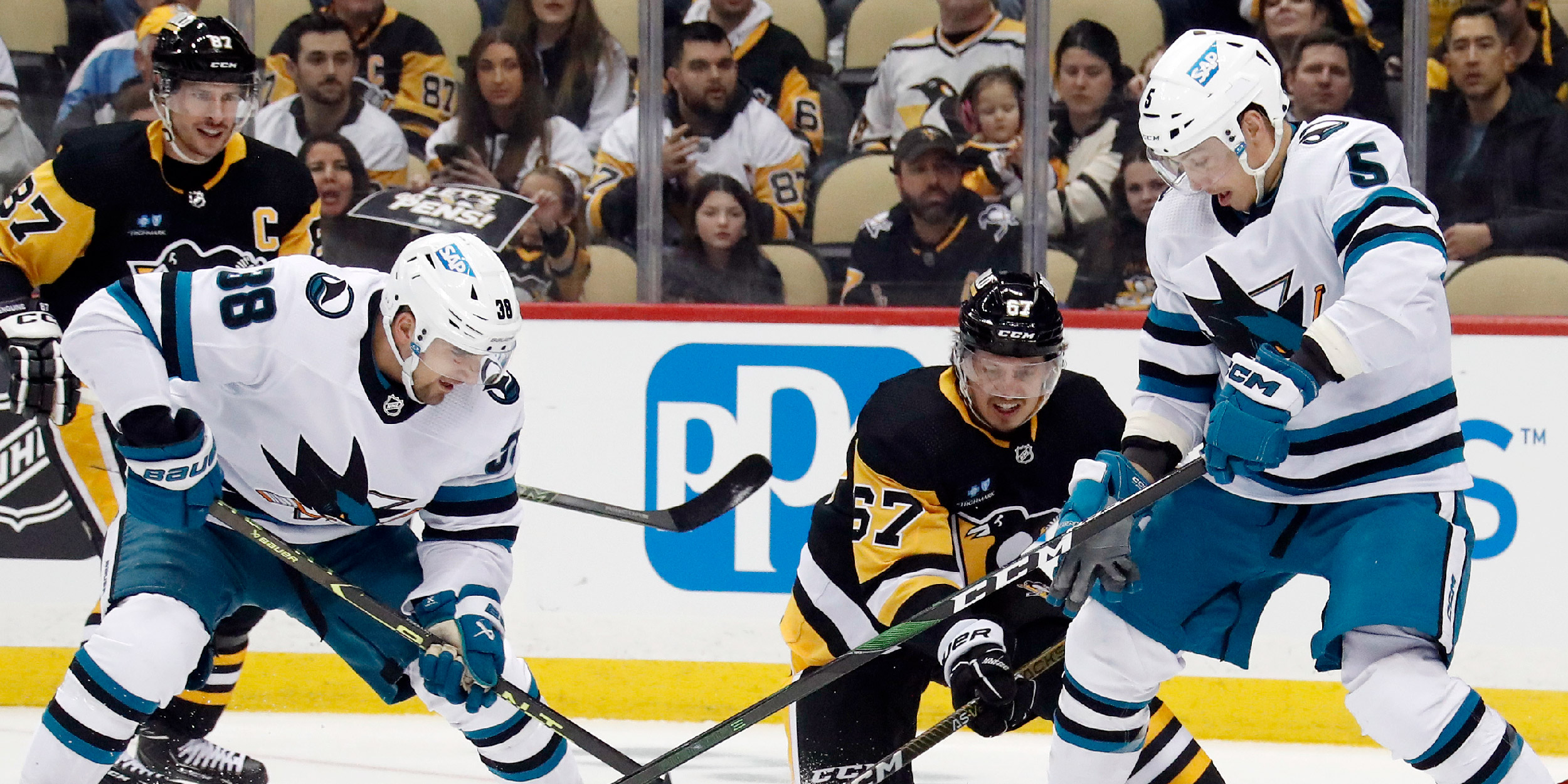
The San Jose Sharks enter a new era on the blue line. Gone are Brent Burns and Erik Karlsson, and for the first time in over 15 years, the Sharks do not have a clear puck-moving defenseman. This group is full of defense-first defensemen, and while this might have been a recipe for success in previous eras, there is an argument that this could be the worst blueline in the NHL.
How do you attempt to replace Erik Karlsson?
101 points and a Norris Trophy later, Karlsson was must-see TV every time he touched the ice last year despite the Sharks being one of the worst teams in the NHL. Karlsson led the team in ice time, points, and assists and was third on the team in goals. Now, Karlsson is in Pittsburgh, and the Sharks have no clear answer to replace him. No sane person would expect anyone to replicate Karlsson’s production even if Erik Karlsson was still in San Jose. It was a generational season from a generational player.
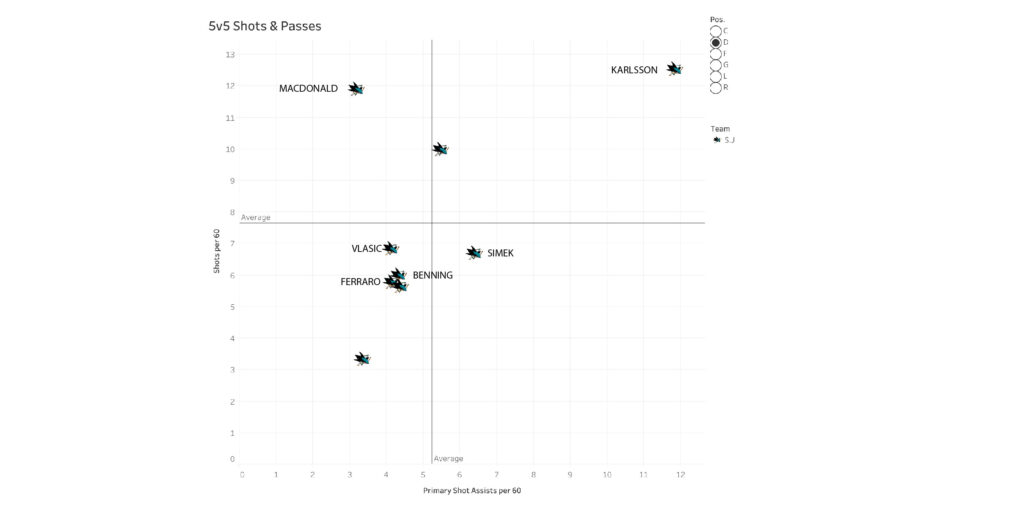
What Head Coach David Quinn and the Sharks can do is to change the way they play. With Karlsson, the Sharks would play a more open style since he was able to make plays few in the NHL can make. Now, look for the Sharks to play a much tighter style. Under Quinn last year, players like Marc-Edouard Vlasic and Matt Benning had good seasons, and with the additions of Matt Benning and Jan Rutta, more pressure can come off of Mario Ferraro to be the Sharks leader on the blueline. The Sharks will need to be aggressive in trying to prevent scoring chances, as they will struggle to create offense at the same clip as last year.
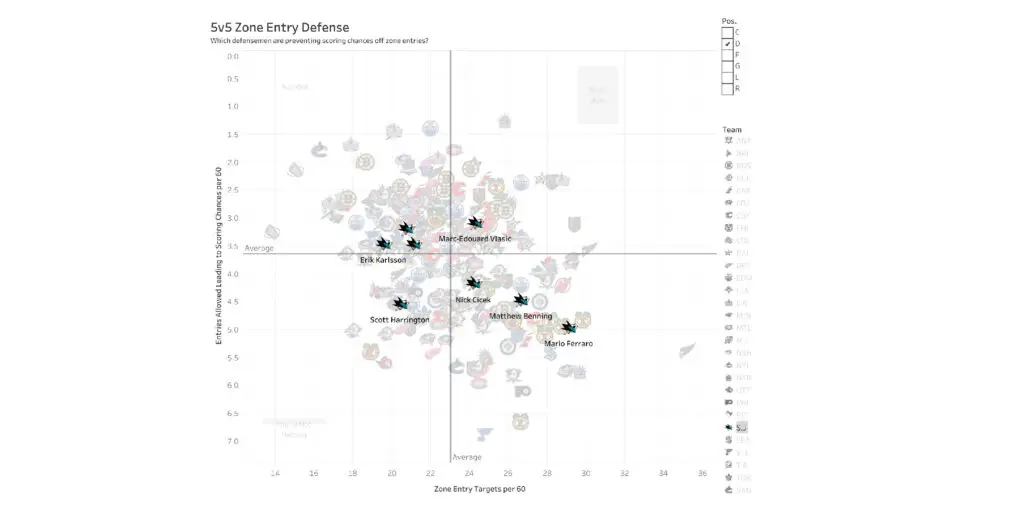
While the Sharks can attempt to play a tighter defense and try to limit chances, the issue is this puts a ceiling on your team. It’s hard to play perfect defensive hockey every shift, every period, every game. The Sharks also have several question marks in the net with Mackenzie Blackwood and Kaapo Kahkonen, so it could be a moot point to play good defense if Blackwood or Kahkonen let in a soft goal. The Sharks will need to rely on their forwards to help chip in on getting the transition and offense going, as they lack a playmaker on the backend to start the transition cleanly.
In other words, you can’t replace Erik Karlsson. You have to change every aspect of how you approach the game.
How long do the veterans hold off the future?
Since Mike Grier has taken over in San Jose, he has worked to overhaul a blueline prospect pool that was lacking. He’s acquired Henry Thrun, Shakir Mukhamadullin, Nikita Okhotyuk, and Leon Gawanke via trades. He signed Valterri Pulli out of the Finnish league and this weekend claimed Ty Emberson. Gawanke is the old man in this group at the age of 24. With the Sharks not expecting to be competitive this season, when does Grier want to see the future? Thrun has a chance to make the opening night roster after his great debut last season and an outstanding summer and training camp. The others will have to start the season in the AHL on the San Jose Barracuda, but if the Sharks struggle to generate offense from the blueline, it could be sooner rather than later until some of these players start to get a look.
Vlasic (36) and Ferraro (25) are both considered long-term pieces to the Sharks unit because of their contract (Vlasic) and value (Ferraro). Newcomer Jan Rutta has two years left on his deal but could be a potential piece at the deadline as a player who could help a contender’s bottom pairing. Matt Benning and Kyle Burroughs are both here for three years on small deals. Radim Simek and Jacob MacDonald are both entering the last years of their deals and will not be on the Sharks organization next year.
Nikolai Knyzhov is stuck between two worlds. While he is only 25, Knyzhov has missed most of the last two seasons with a groin injury and an Achilles injury. He did return last year and played mostly in the AHL as he continued to rehab. Knyzhov did get a new contract at the end of the last season for two years at $2.5 million ($1.25 million AAV) but is no longer waivers exempt. Grier must make some tough decisions to get the team down to 23.
Projected pairings:
Ferraro-Benning
Thrun-Vlasic
Knyzhov-Rutta
Extra: Burroughs
Put the Special in Special Teams?
Who will quarterback the powerplay is one of the biggest questions the Sharks face this season. Henry Thrun has been getting a lot of opportunities in the preseason and has looked solid in the role, but it’s a lot to ask a rookie to step into the NHL and run a power play. Matt Benning has been playing on the second unit, but it has had mixed results. While the Chaos Approach of five forwards can be useful, it’s not sustainable for long-term success, and the Sharks will need to find a player who can be a solution from the point. Or at least until Shakir Mukhamadullin is ready for the NHL.
On the penalty kill, the Sharks have the pieces in place to be a top unit once again. The key will be to try and limit Mario Ferraro’s time on the penalty kill. He has led the team in penalty kill minutes since the 2020-21 season. With the projected pairings, Quinn should be able to play all six defensemen on the penalty kill and help with the wear and tear on Ferraro.
The Sharks will need their defensemen to help carry the load on the penalty kill as they get new forwards acclimate to their system. If the defense can hold down the fort while the chemistry of the penalty killing forwards is ironed out, the Sharks should be in a position to be a top-10 penalty killing unit again.
Discover more from Inside The Rink
Subscribe to get the latest posts sent to your email.

